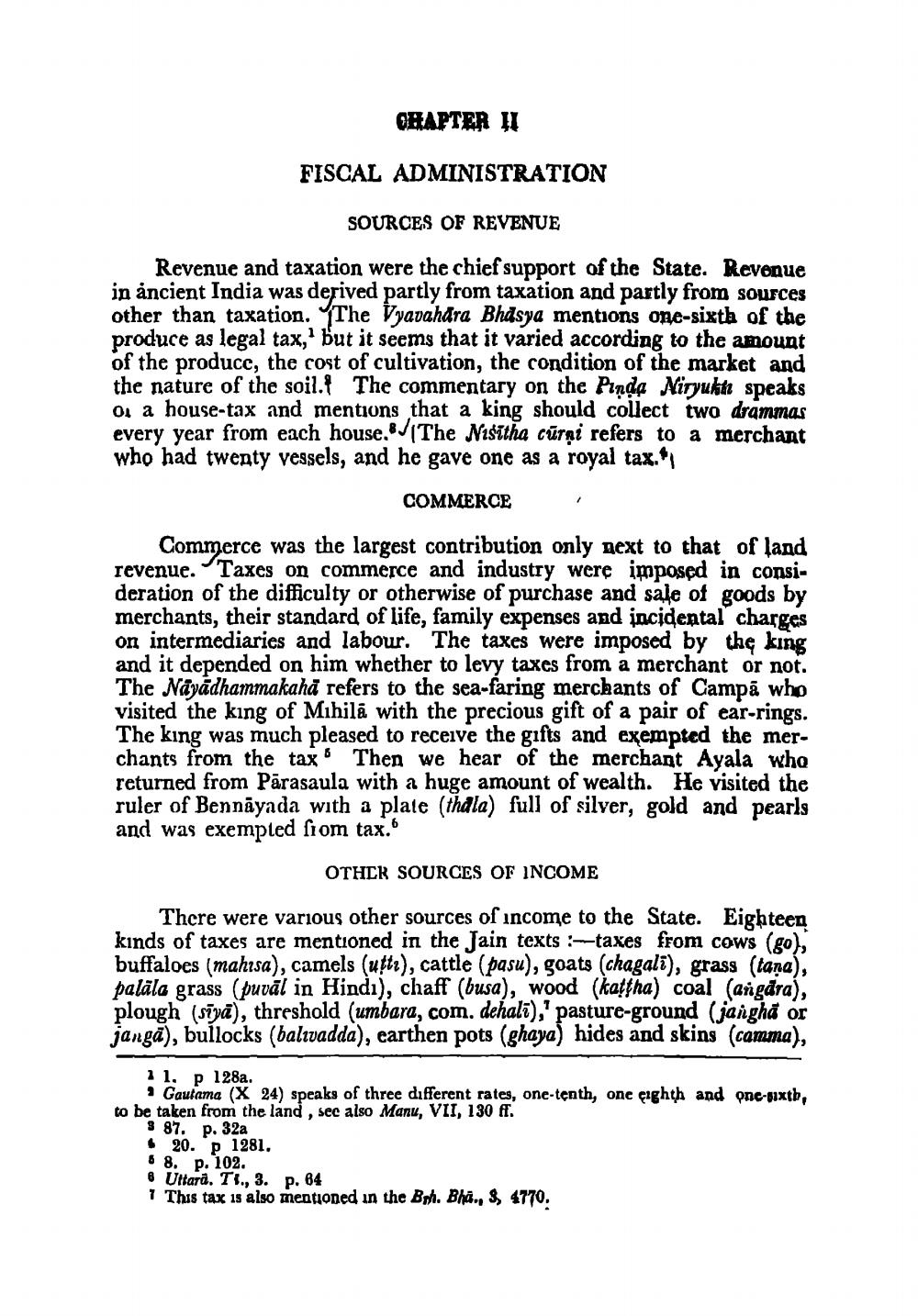________________
CHAPTER N
FISCAL ADMINISTRATION
SOURCES OF REVENUE
Revenue and taxation were the chief support of the State. Revenue in ancient India was derived partly from taxation and partly from sources other than taxation. The Vyavahdra Bhdsya mentions one-sixth of the produce as legal tax, but it seems that it varied according to the amount of the produce, the cost of cultivation, the condition of the market and the nature of the soil. The commentary on the Pinda Niryukh speaks 01 a house-tax and mentions that a king should collect two drammas every year from each house. (The Nisitha cūrai refers to a merchant who had twenty vessels, and he gave one as a royal tax.
COMMERCE
Commerce was the largest contribution only next to that of land revenue. Taxes on commerce and industry were imposed in consideration of the difficulty or otherwise of purchase and sale of goods by merchants, their standard of life, family expenses and incidental charges on intermediaries and labour. The taxes were imposed by the king and it depended on him whether to levy taxes from a merchant or not. The Näyâdhammakahā refers to the sea-faring merchants of Campā who visited the king of Mihilā with the precious gift of a pair of ear-rings. The king was much pleased to receive the gifts and exempted the merchants from the tax. Then we hear of the merchant Ayala who returned from Pārasaula with a huge amount of wealth. He visited the ruler of Bennāyada with a plate (thala) full of silver, gold and pearls and was exempted from tax.
OTHER SOURCES OF INCOME
There were various other sources of income to the State. Eighteen kinds of taxes are mentioned in the Jain texts : --taxes from cows (go), buffaloes (mahisa), camels (utti), cattle (pasu), goats (chagalī), grass (tana), palāla grass (puvāl in Hindi), chaff (busa), wood (kattha) coal (angára), plough (sīyā), threshold (umbara, com. dehalī)," pasture-ground (janghā or jangā), bullocks (balivadda), carthen pots (ghaya) hides and skins (camma),
11. p 128a.
· Gautama (X 24) speaks of three different rates, one-tenth, one eighth and one-pixtb, to be taken from the land , sec also Manu, VII, 130 ff.
3 87. p. 32a $ 20. 1281. 8 8. p. 102. 8 Uttara. Ti., 3. p. 64 7 This tax is also mentioned in the Bph. Bha., $ 4770.




